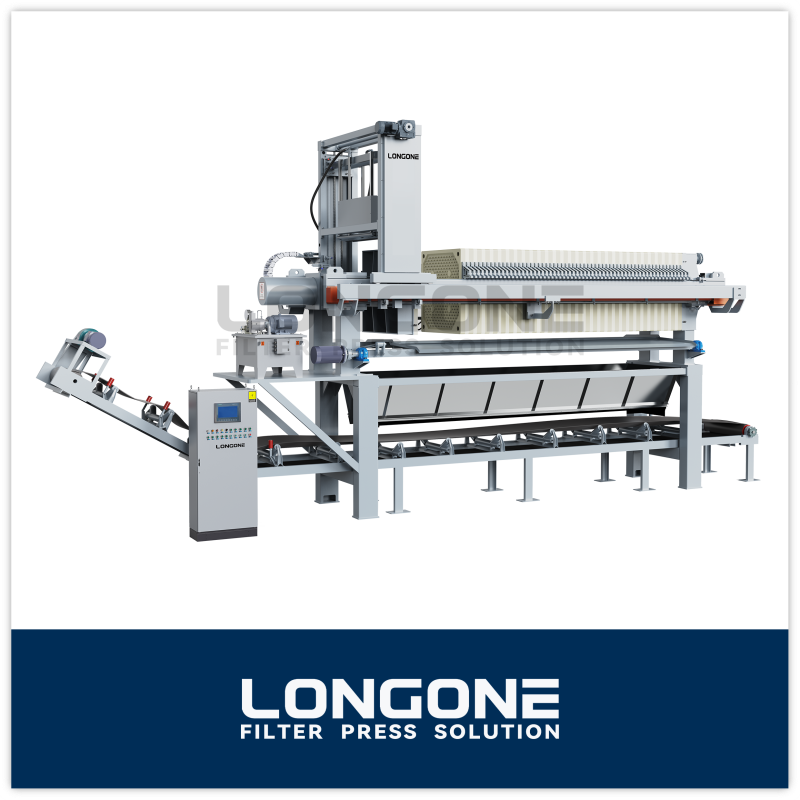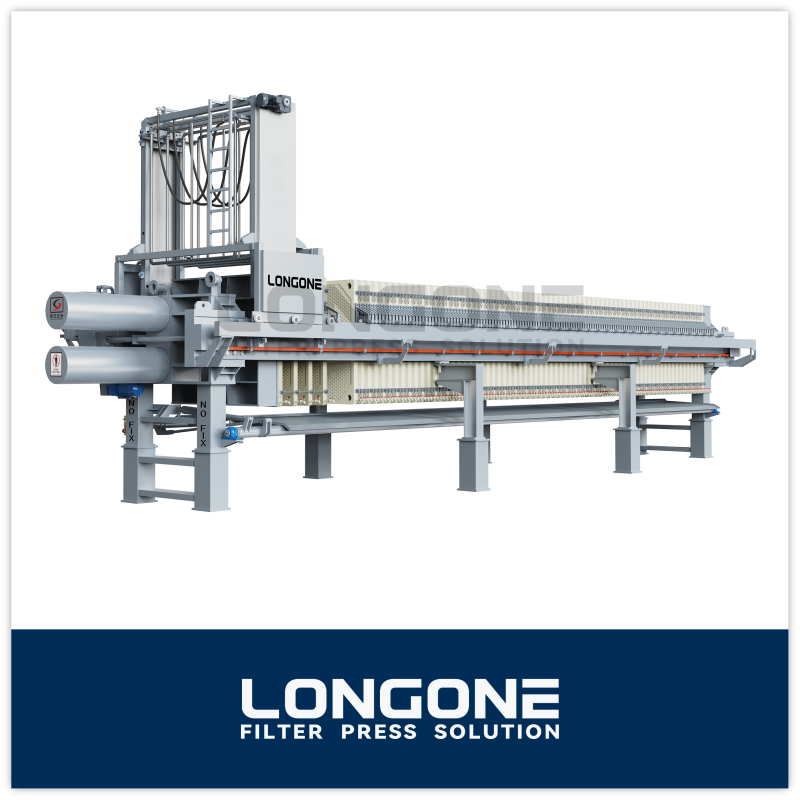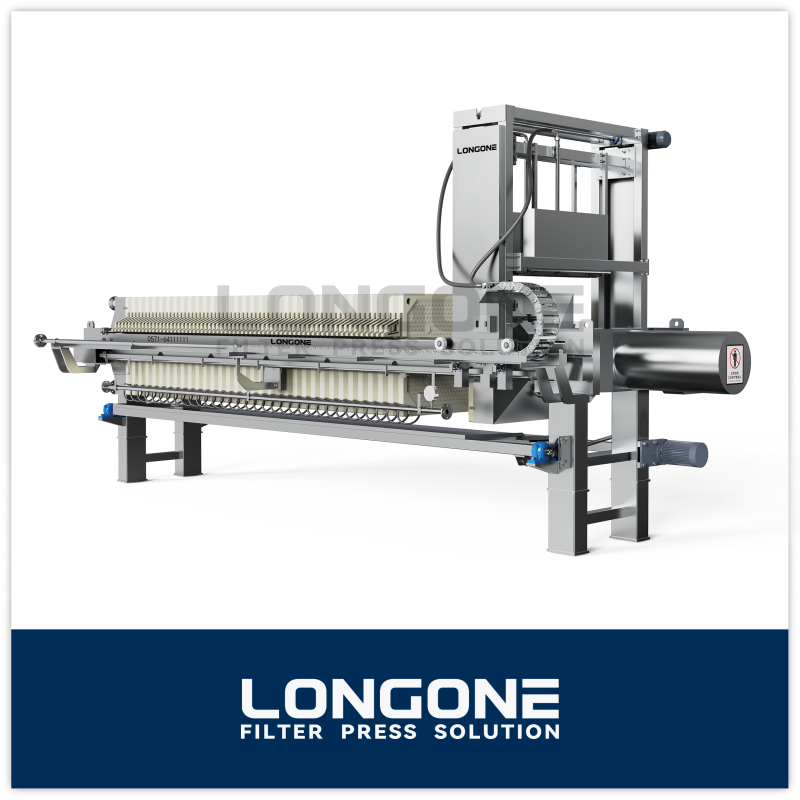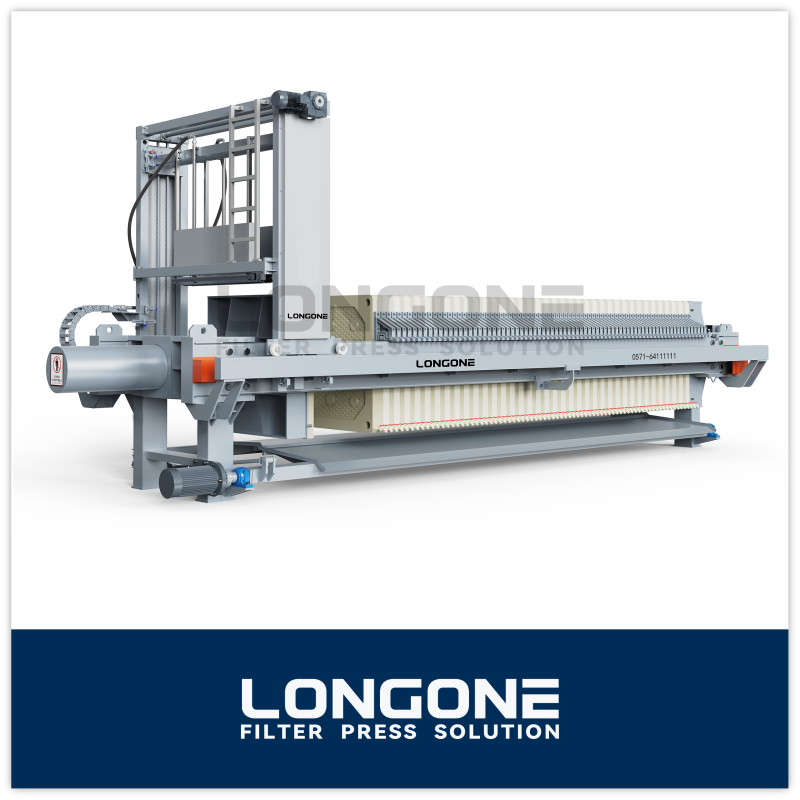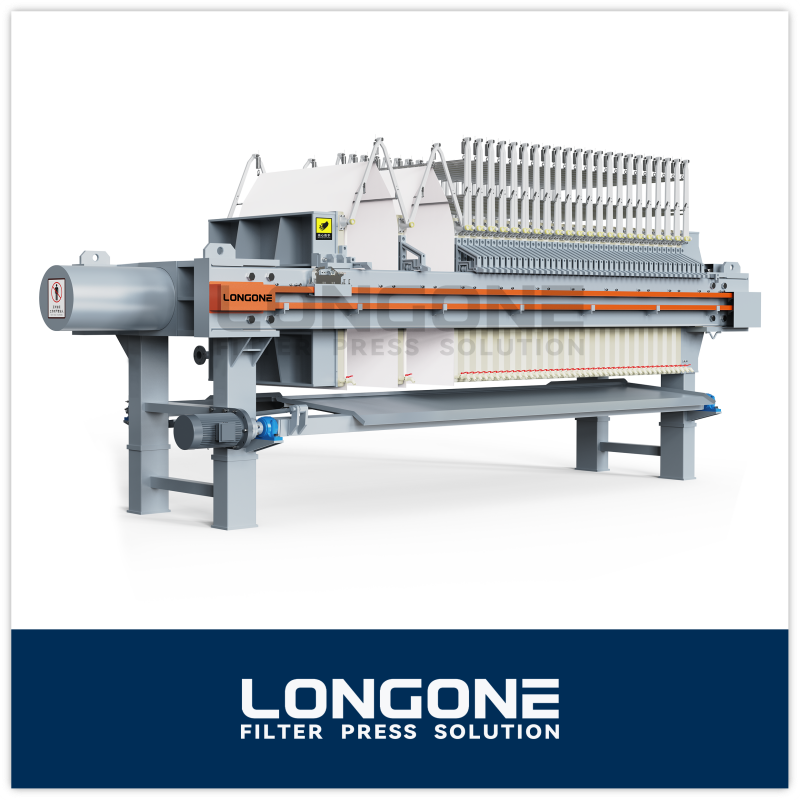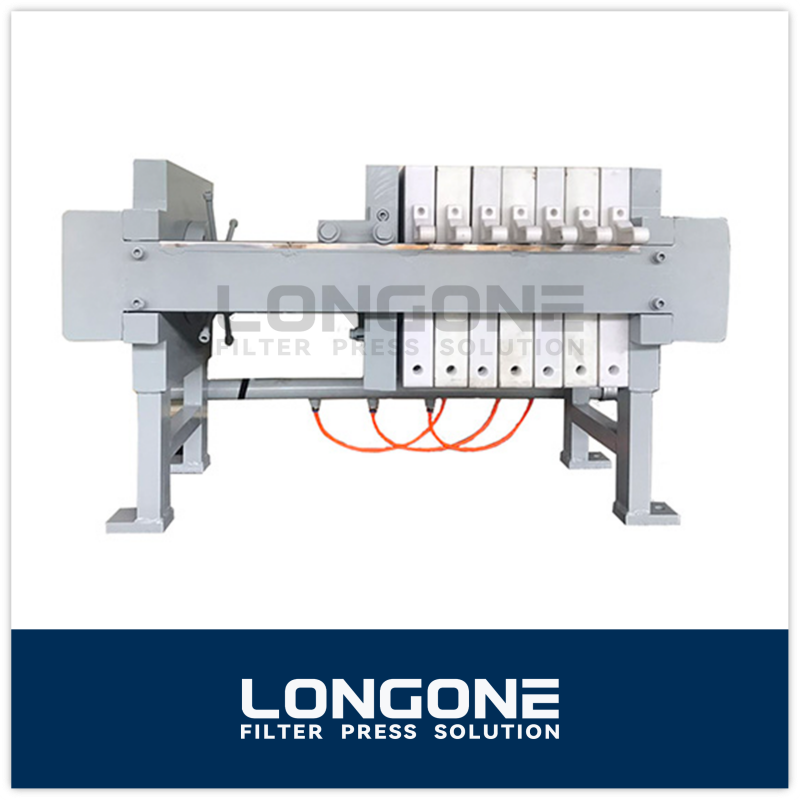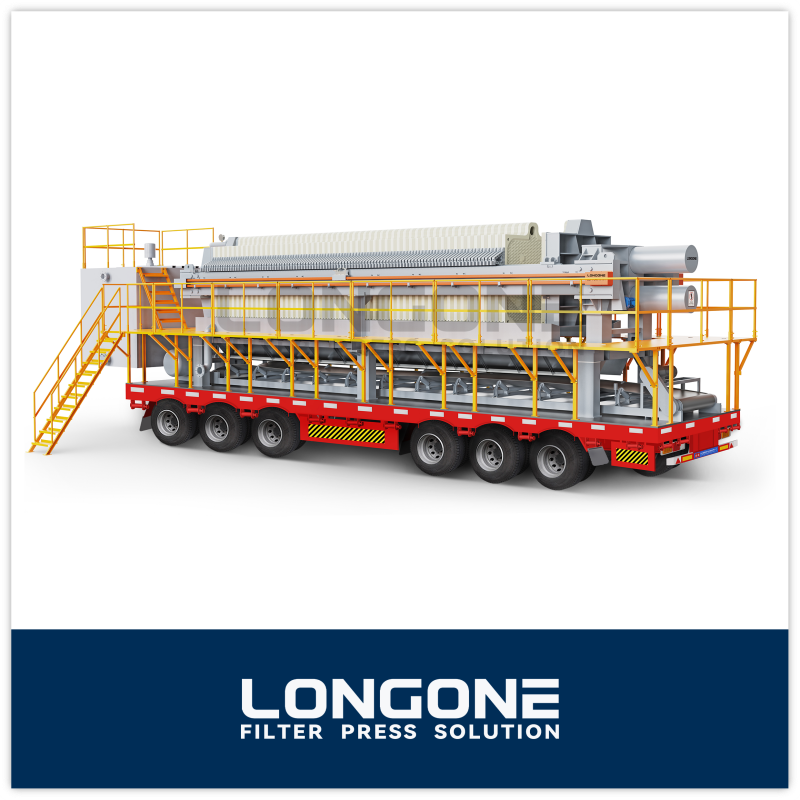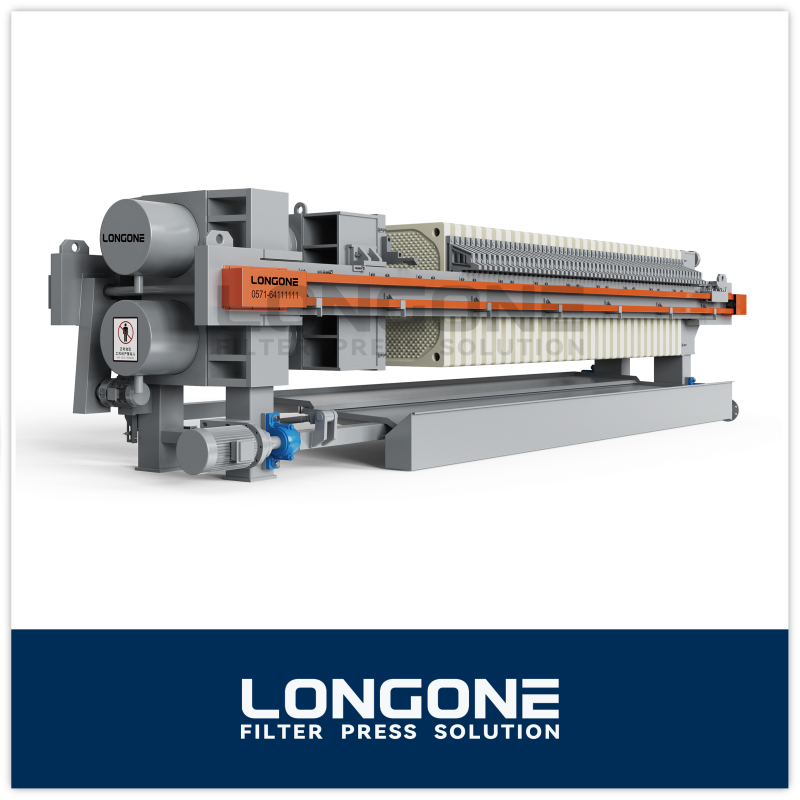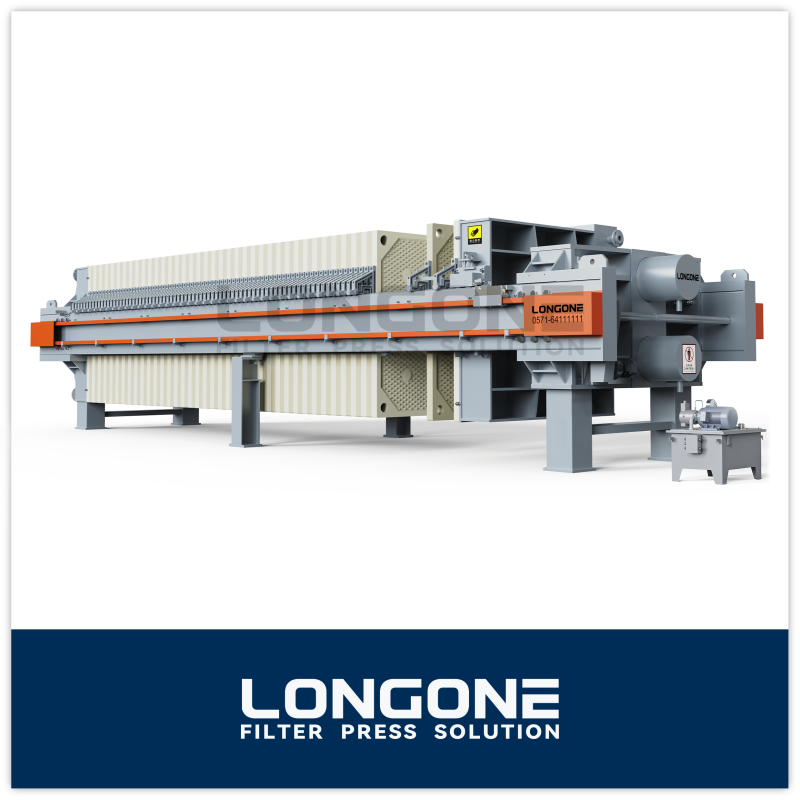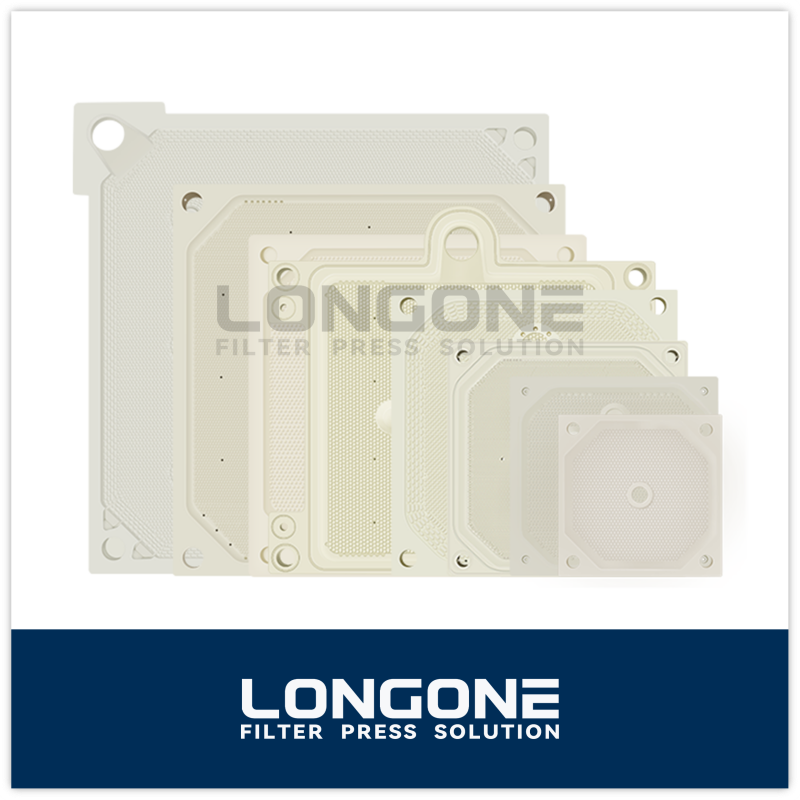A fully automatic filter press is a time-tested and reliable piece of dewatering equipment used extensively across various industries for wastewater treatment. It efficiently separates solids from liquids, enabling the removal of impurities and suspended solids from industrial wastewater. This process facilitates waste handling and disposal while returning clean water to the system.
How Does a Chamber Filter Press Operate?
The primary function of a filter press machine is to separate liquids from solids through pressure filtration using filter media. The process begins when slurry is pumped into the filter press machine, where it is dewatered under pressure.
The key components of a fully automatic filter press include:
1.Frame: The structural support for the filter press machine.
2.Filter Plates: These are used to separate the solids from the liquid.
3.Manifold (Piping and Valves): Manages the flow of slurry and filtrate through the system.
4.Filter Cloth: Essential for optimizing the performance of the fully automatic filter press.
The design of a chamber filter press is tailored to the dewatering volume and type of slurry it processes. Longone, a specialist in liquid and solid separation, provides a diverse range of filter press models and capacities to meet specific needs for effective and cost-efficient dewatering.
The Evolution of the Filter Press:
The filter press machine originated in the mid-19th century in the United Kingdom, initially used for extracting vegetable oil from seeds. Significant advancements were made in the mid-20th century, leading to the development of the first automatic horizontal-type filter press.
Today's automatic chamber filter presses benefit from a long history of improvements, resulting in lower energy and maintenance costs compared to belt presses and centrifuges. For instance, the total operating filtration cost of a fully automatic filter press can be as low as one-sixth of the cost associated with belt presses or centrifuges.
Among the various modern filter press designs, the plate and frame filter press remains one of the most enduring and effective types of dewatering equipment.
Common Applications for Filter Presses:
Automatic chamber filter presses are widely used in industries such as:
Mining and aggregates
Ready-mix concrete washout water recovery
Food and beverage production
Marble and stone cutting
Without filter presses, settling ponds often serve as the initial water treatment option. However, settling ponds require substantial space and lose their effectiveness over time as solids accumulate. This results in a lower long-term return on investment (ROI) as dirty water can re-enter the process unless the pond is dredged or replaced. Longone recommends automatic chamber filter presses and other dewatering equipment over settling ponds for most applications.
How Filter Presses Work:
During the filling cycle, slurry is introduced into the filter press machine and evenly distributed. Solids accumulate on the filter cloth, forming a "filter cake" within the plate voids. Clean water, or filtrate, exits through ports in the filter plates.
Filter presses operate using pressure filtration. As the feed pump generates pressure, solids build up within the chambers until they are fully filled, forming the filter cake. Once the chambers are full, the filtration cycle concludes, and the filter cakes are released. Many high-capacity filter presses feature automatic plate shifters to expedite the process. For continuous operation in demanding environments like mining or chemical manufacturing, fully automatic filter presses are designed to handle around-the-clock workloads.
Optimizing Filter Press Performance:
To ensure optimal performance, filter cloths should be selected based on the specific application and the type of solids being filtered. Additionally, filter press design, filtration capacity, plate size, and the number of chambers can be customized. Accessories such as cloth washing systems, drip trays, and cake shields can further enhance fully automatic filter press functionality.
High-pressure technology is crucial for maximizing filter press efficiency. For example, Longone's filter presses utilize pressures up to 50 bar to tackle even the most challenging slurries across various sectors.
Combining Clarifiers and Filter Presses:
Chamber filter presses are ideal for slurries containing 50-60% solids. For lower solids concentrations, clarifiers are used as the initial dewatering phase. Clarifiers, large settling tanks, can handle water with 5-10% solids. They use gravity and polymers to settle solids at the bottom, which are then discharged as sludge.
There are two main types of clarifiers:
1.Horizontal Rake Clarifiers: Use a rake mechanism to stir and move sludge.
2.Vertical Deep Cone Clarifiers: Employ static decantation for natural solid precipitation.
Choosing between these types depends on factors such as maintenance costs, material types, and solids requirements. When used together, clarifiers and filter presses can recover 90-95% of water as clean water, with the remaining water discharged along with the filter cakes.
Comprehensive Water Treatment with Longone:
At Longone, our experts specialize in optimizing dewatering systems through comprehensive water treatment solutions. We analyze your water chemistry to identify the right flocculants, coagulants, and pH balancers, enhancing the performance of your clarifiers and filter presses.
In addition to providing chemical products, we offer advanced dewatering equipment, including the Longone filter press. Compared to standard models, Longone filter presses provide:
Complete automatic washing
Fully automated systems
Remote monitoring and assistance
High-pressure technology (up to 50 bar)
Open filtrate design for easy cloth inspection
Efficient cake discharge with gasser shakers
If you are a smaller business considering a filter press, feel free to reach out to us for tailored advice and solutions.


